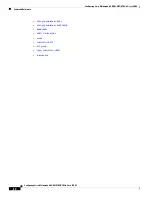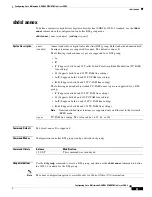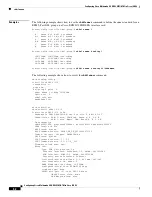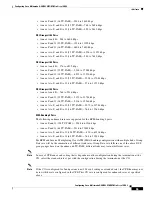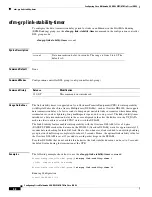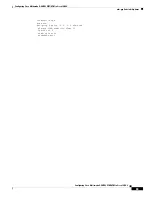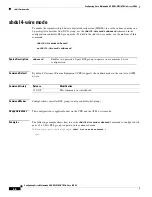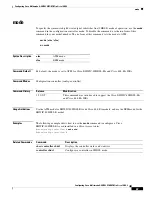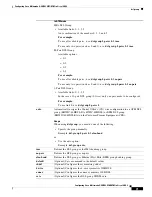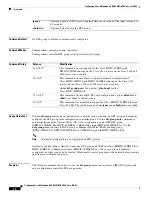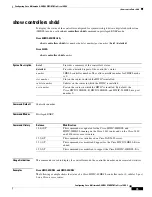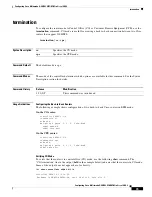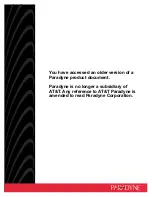
Configuring Cisco Multimode G.SHDSL EFM/ATM in Cisco ISR G2
handshake
64
Configuring Cisco Multimode G.SHDSL EFM/ATM in Cisco ISR G2
handshake
To configure a handshake, use the
handshake
command in the configuration controller DSL group
mode.
handshake
[
auto
|
g.shdsl
|
g.shdsl.bis
|
ieee
|
itut
]
Note
The
handshake
command is not available in the CO-ATM mode.
Syntax Description
Command Default
None
Command Modes
Configuration controller DSL group (config-controller-dsl-group)
Command History
Usage Guidelines
The
handshake
command is useful when you encounter interoperability issues with different DSLAMs.
When terminations at the CO and CPE have the same handshake mechanism, the line will train faster
without interoperability issues.
For better interoperability with different DSLAMs, use one of the following options with the
handshake
auto
command.
•
In the CPE-ATM mode:
–
If DSLAM supports G.SHDSL rates, use the
g.shdsl
keyword.
–
If DSLAM supports G.SHDSL.BIS rates, use the
g.shdsl.bis
keyword.
auto
Specifies automatic detection of G.SHDSL or G.SHDSL.BIS rates.
Note
If termination occurs at the Customer Premise Equipment (CPE),
regardless of whether the controller is in the CPE-ATM mode or the
Ethernet in first mile (EFM) mode, the
auto
keyword is the default.
g.shdsl
Initiates the G.SHDSL handshake. This is supported on the CPE-ATM mode only.
g.shdsl.bis
Initiates the G.SHDSL.BIS handshake. This is supported on the CPE-ATM mode
only.
ieee
Initiates the Institute of Electrical and Electronics Engineers (IEEE) handshake.
This is supported on the EFM mode only.
itut
Initiates the ITU Telecommunication Standardization Sector (ITU-T) handshake.
This is supported on the EFM mode only.
Note
If termination occurs in the CO-EFM mode, the
itut
keyword is the
default.
Release
Modification
15.2(2)T
This command was introduced.
15.3(2)T
This command was modified to include support for the CO.

